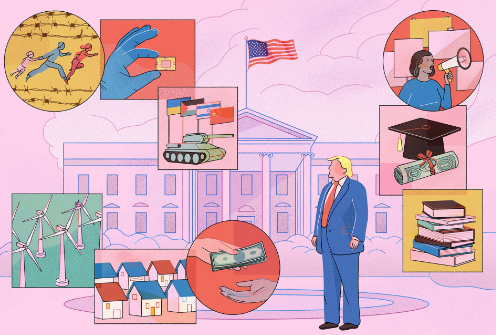Here’s a breakdown of three major economic policy changes under the Trump administration
that had a real impact on younger people, especially when it comes to student loans:
1. Student Loan Policies – A Push Away from Forgiveness
The Trump administration proposed eliminating the Public Service Loan Forgiveness (PSLF)
program, which was designed to help people in public service jobs like teachers, nurses, and
government workers have their student loans forgiven after ten years.
Instead, the administration wanted to replace PSLF with a single income-driven repayment
plan, capping monthly payments at 12.5% of discretionary income and forgiving loans after 15
years.
While these changes were proposed in the budget, they were never fully implemented. Still,
they signaled a shift away from government-backed loan forgiveness programs, leaving many
young borrowers uncertain about their financial future.
2. Tax Cuts and Jobs Act (2017) – Lower Taxes, But Fewer Benefits for
Students
The Tax Cuts and Jobs Act (TCJA) lowered tax rates, which meant young workers kept more of
their paychecks. That part was a win.
But initially, the bill proposed eliminating the student loan interest deduction a small but
important benefit that lets borrowers deduct up to $2,500 in interest payments each year. While
this deduction was ultimately kept, the back-and-forth over whether it would be cut left many
students and recent grads worried about losing one of the few financial breaks they had.
The law also slashed the corporate tax rate from 35% to 21%. Supporters said this would lead
to more job opportunities for young workers, but critics pointed out that much of the benefit went
to businesses and shareholders rather than directly boosting wages.
3. Deregulation and the Gig Economy – More Flexibility, Less Security
For many young people, gig work like driving for Uber, delivering with DoorDash, or freelancing
became a big part of making ends meet.
The Trump administration made it easier for companies to classify workers as independent
contractors instead of employees, meaning they didn’t have to provide benefits like health
insurance or paid time off.
On one hand, this gave workers more flexibility, which some liked. But on the other hand, it
made jobs less stable and cut off access to important worker protections. For young people
trying to build a secure financial future, that tradeoff wasn’t always ideal.
Final Thoughts – A Changing Landscape for Young People
Trump’s economic policies were largely focused on tax cuts, deregulation, and reducing
government spending on programs like student loan forgiveness. Some changes, like lower
taxes and job flexibility, were helpful in the short term. But for many young people struggling with
student debt or looking for stable careers, these policies made things more uncertain.
I also spoke with a PhD student in Texas who teaches master’s students, and he shared how
these policy changes hit grad students hard. Those who needed financial aid had to submit
applications for grants, which were funneled through their schools. To qualify, they had to meet
strict requirements like maintaining a certain GPA and working a set number of hours. Normally,
they’d get paid at the end of the semester after completing their work. But after recent policy
changes, many students found themselves unable to secure grant funding. Some were
frustrated, others were just trying to figure out how to stay afloat.
This student did not want to disclose personal information, as they have signed a contract with the
university.
At the end of the day, these policies weren’t just numbers on a page—they had real
consequences for young people trying to balance work, education, and their financial future.









Harshan Santhamoorthi • May 8, 2025 at 10:39 am
Good job, Shriyan